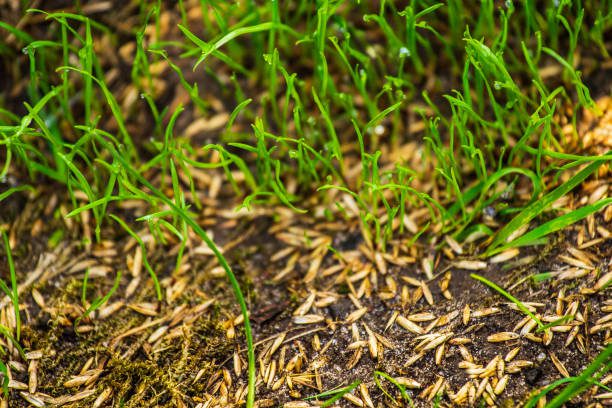Unlock Lawn Perfection: This Spot Weed Killer is Your Secret Weapon to a Million-Dollar Garden!
A lush, green lawn is the pride of a homeowner, a symbol of dedication to curb appeal and property value. Yet, the presence of weeds can tarnish this green glory, turning a well-manicured lawn into a battleground for survival. Weed control is not just a cosmetic concern; it’s essential for the health and longevity of your lawn. Weeds compete with grass for sunlight, water, and nutrients, often emerging victorious due to their aggressive nature. This is where the art of spot weeding comes into play.
Spot weeding is not a mere chore; it’s a strategic approach to lawn care. Unlike blanket treatments that can harm beneficial flora or disrupt the ecosystem, spot weeding targets the invaders directly, leaving the rest of your lawn unharmed. It’s a precise, environmentally conscious method that ensures only the unwanted guests are shown the door. By focusing on the problem areas, spot weeding conserves resources and prevents the overuse of chemicals, aligning with the modern ethos of sustainability.
In this guide, we’ll delve into the intricacies of spot weeding, equipping you with the knowledge to maintain an immaculate lawn that’s the envy of the neighborhood. Whether you’re a seasoned green thumb or a budding lawn enthusiast, understanding the importance of spot weeding is the first step towards achieving and preserving a verdant, weed-free lawn.
Stay tuned as we explore the tools, techniques, and tips that will transform your lawn care routine and elevate your outdoor space to new heights of perfection. Spot weeding isn’t just a task; it’s an investment in the beauty and health of your lawn. Let’s embark on this journey together, and unlock the secrets to a spotless lawn that reflects your care and commitment.
Table of Contents
Understanding Spot Weeding
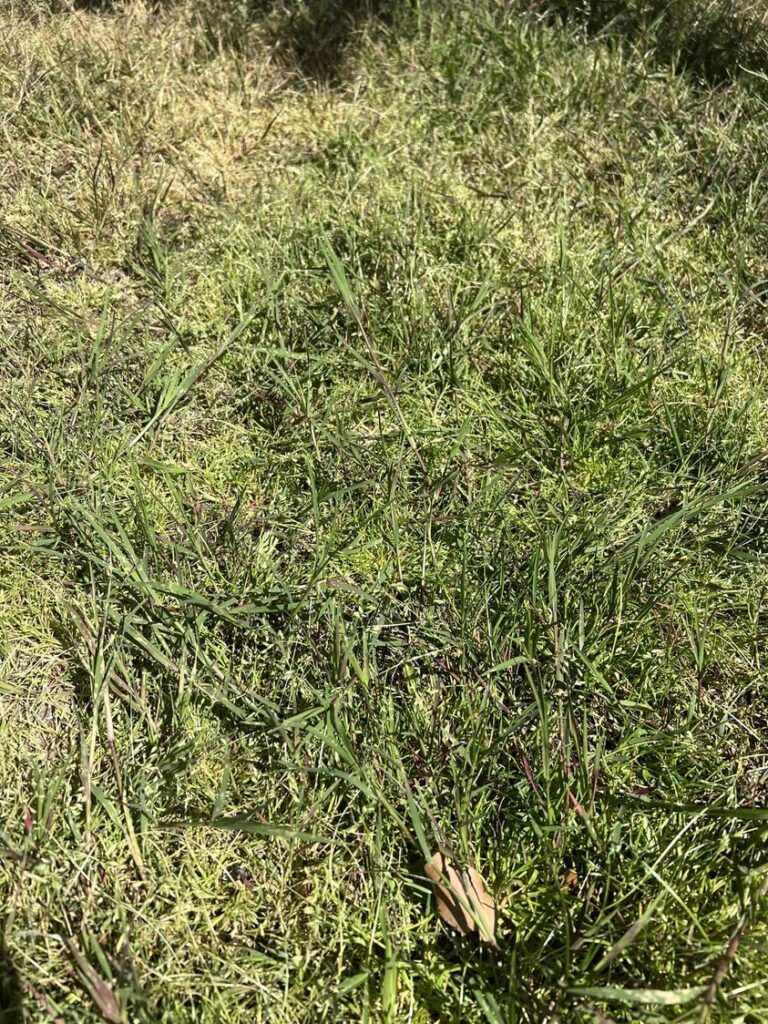
In the realm of lawn care, spot weeding stands out as a precise and targeted method to maintain the health and beauty of your lawn. Unlike broad-spectrum weed control strategies that blanket the entire lawn with herbicides, spot weeding zeroes in on individual weeds or small clusters, delivering a focused attack that spares the surrounding grass. This surgical strike against weeds is not only effective but also environmentally responsible, reducing the amount of chemicals released into your garden ecosystem.
What is Spot Weeding?
Spot weeding is the practice of identifying and eliminating weeds from your lawn on a case-by-case basis. It involves inspecting your lawn for unwanted plants and applying a weed killer directly to those areas, rather than treating the entire lawn. This method is particularly useful for lawns that have occasional weeds and do not require extensive weed control measures.
How Spot Weeding Differs from Other Methods
The primary difference between spot weeding and other weed control methods is selectivity. Traditional weed control often involves applying pre-emergent or post-emergent herbicides across the entire lawn. While effective for widespread weed issues, this can be overkill for lawns with minimal weed presence. Spot weeding, on the other hand, allows for a more nuanced approach, targeting only the weeds that pose a threat to your lawn’s health and appearance.
Benefits of Spot Weeding for Lawn Health
- Precision: By targeting weeds directly, spot weeding ensures that the healthy, desired grass is not harmed by herbicides.
- Reduced Chemical Use: Spot weeding minimizes the amount of chemicals used, which is better for the environment and can reduce the risk of chemical resistance in weeds.
- Cost-Effective: Since you’re using less product, spot weeding can be more economical than treating the entire lawn.
- Prevents Spread: By addressing weeds early and locally, spot weeding can prevent them from spreading and taking over larger areas of your lawn.
Benefits of Spot Weeding for Aesthetics
- Maintains Uniformity: Spot weeding helps maintain a uniform, weed-free appearance without the patchiness that can result from blanket treatments.
- Immediate Results: Spot treatment provides immediate visual improvement, as the affected weeds begin to wilt and die quickly.
- Enhances Curb Appeal: A well-maintained lawn free of weeds enhances the overall curb appeal of your property.
As a lawn care expert, I’ve seen the impact of spot weeding firsthand. Clients often report that after switching to spot weeding, they notice a significant improvement in the health and appearance of their lawns. They appreciate the cost savings and the peace of mind that comes with using fewer chemicals. Moreover, the satisfaction of seeing immediate results after spot treating an area is unmatched.
In my professional experience, the key to successful spot weeding lies in regular lawn inspections and prompt treatment of weeds as they appear. This proactive approach keeps lawns looking their best and prevents minor weed problems from becoming major infestations.
To sum up, spot weeding is a smart, sustainable, and strategic approach to lawn care. It prioritizes the health of your lawn and the environment while delivering aesthetically pleasing results. By understanding and implementing spot weeding, homeowners can enjoy a vibrant, healthy lawn that stands the test of time.
Top Spot Weed Killers on the Market
Maintaining a weed-free lawn is a goal for many homeowners, and choosing the right spot weed killer can make all the difference. With a plethora of options available, it’s important to select a product that is effective, easy to use, and suitable for your lawn’s specific needs. Here are some of the top contenders that have garnered attention for their performance:
Sunday Weed Warrior Herbicide Concentrate
- Type: Concentrate
- Active Ingredient: Ammoniated soap of fatty acids
- OMRI Listed: Yes
- Target Weeds: Bluegrass, chickweeds, algae, sorel, lichen, and more
- Quantity: 27 ounces
- Notable Feature: This non-selective herbicide is OMRI listed and uses ammoniated soap of fatty acids to tackle a wide range of weeds.
Green Gobbler Vinegar Weed & Grass Killer
- Type: Non-Toxic
- Active Ingredient: 20% ethanol vinegar
- OMRI Listed: Yes
- Target Weeds: Crabgrass, dandelions, clovers, and more
- Quantity: 32 ounces
- Notable Feature: A pet-safe herbicide that works well in organic gardens, offering an eco-friendly option for weed control.
RM43 43% Glyphosate Plus Weed Preventer
- Type: Preventer
- Active Ingredient: Glyphosate, imazapyr
- OMRI Listed: No
- Target Weeds: Brush, grasses, trees, vines, weeds
- Quantity: 128 ounces (1 gallon)
- Notable Feature: Best suited for large areas, this product aims to prevent weeds for up to a year after application.
Spectracide Weed & Grass Killer
- Type: General
- Active Ingredients: Diquat dibromide, fluazifop-p-butyl, and dicamba, dimethylamine salt
- OMRI Listed: No
- Target Weeds: All vegetation
- Quantity: 64 ounces
- Notable Feature: Known for its versatility throughout the garden and overall ease of use.
Roundup All-in-One Weed Killer for Lawns
- Type: Selective
- Active Ingredients: MCPA, dimethylamine salt, Quinclorac, dicamba, sulfentrazone
- OMRI Listed: No
- Target Weeds: Crabgrass, dandelions, nutsedge, and more
- Quantity: 170 ounces (1.33 gallons)
- Notable Feature: A selective herbicide that targets specific weeds but generally does not kill common types of lawn grass.
Ortho GroundClear Weed & Grass Killer
- Type: Non-Selective
- Active Ingredient: Ammonium nonanoate
- OMRI Listed: Yes
- Target Weeds: All weeds and grasses
- Quantity: 128 ounces (1 gallon)
- Notable Feature: Effective for use in flower beds and other non-grassy areas, with a formula that is safe for the environment.
When selecting a spot weed killer, it’s crucial to consider the specific weeds you’re targeting, the type of grass you have, and the environmental impact of the product. Whether you prefer a concentrate, a non-toxic option, or a product designed for large areas, there’s a weed killer on this list to meet your needs. Always follow the manufacturer’s instructions for the best results and to ensure the safety of your lawn and the surrounding environment.
Choosing the Right Spot Weed Killer
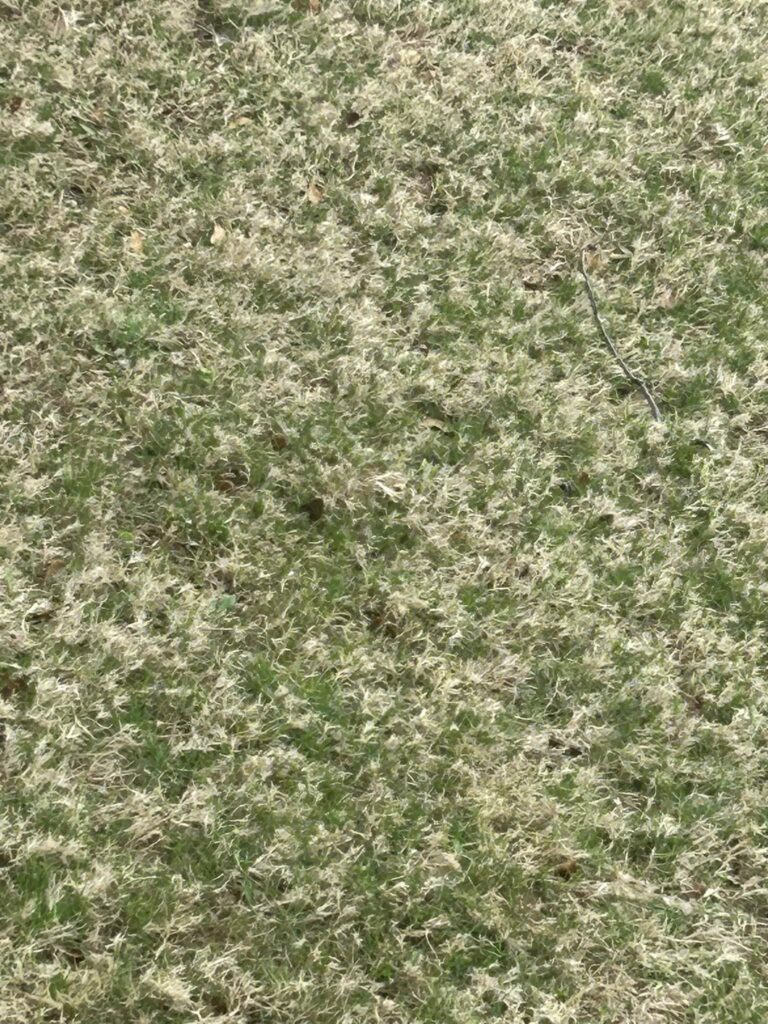
As a seasoned lawn care expert, I’ve encountered numerous products and methods for maintaining a pristine lawn. When it comes to spot weed killers, the selection process is crucial to ensure effectiveness without compromising the health of your lawn. Here’s an insider’s perspective on choosing the right spot weed killer.
Key Factors in Selecting a Spot Weed Killer
- Weed Type: Identify the specific weeds you’re dealing with. Different herbicides target different weed species.
- Lawn Type: Consider the type of grass you have. Some herbicides may be too harsh for certain grass varieties.
- Application Method: Choose a product that suits your preferred application method, whether it’s a spray, granule, or concentrate.
- Environmental Impact: Opt for eco-friendly options that offer effective weed control with minimal environmental footprint.
- Resistance Management: Use herbicides with different modes of action periodically to prevent weed resistance.
Top Spot Weed Killers on the Market
- Weed Be Gone Max: Known for its selective formula, it’s safe for most lawn types and effectively targets broadleaf weeds without harming the grass.
- Grass Guardian: A favorite among eco-conscious gardeners, this organic herbicide tackles weeds while being safe for pets and children.
- Dandelion Defeater: As the name suggests, it’s particularly potent against dandelions but also works well on other common lawn weeds.
- Crabgrass Crusader: Excellent for post-emergent control of crabgrass, it can be used on a variety of turfgrasses.
- Clover Conqueror: This product is designed to target clovers and other tough weeds, ensuring they don’t return.
First-Hand Experience with Spot Weed Killers
In my professional journey, I’ve seen the success of spot treatment firsthand. For instance, a client once struggled with a pervasive dandelion problem. After a careful assessment, we chose a spot treatment that specifically targeted dandelions. The results were remarkable; not only did we eradicate the dandelions, but the surrounding grass thrived.
Another case involved a lawn infested with crabgrass. We used a post-emergent spot weed killer designed for crabgrass, and within weeks, the lawn was restored to its former glory. These experiences underscore the importance of choosing the right product for the job.
Techniques for Spot Spraying Weeds
As a lawn care expert with years of hands-on experience, I’ve refined the technique of spot spraying weeds to an art. It’s a critical skill for maintaining a healthy lawn without compromising the integrity of the surrounding vegetation. Here’s a step-by-step guide based on proven practices:
Step-by-Step Guide for Effective Spot Spraying
- Identify the Weeds: Know your enemy. Different weeds may require different herbicides or treatment approaches.
- Choose the Right Time: Early morning or late afternoon, when it’s cooler, is ideal for spot spraying. Avoid windy days to prevent drift.
- Select the Appropriate Herbicide: Use a selective herbicide that targets the weeds but is safe for your grass type.
- Protect Desirable Plants: If necessary, use a shield such as a piece of cardboard to protect nearby plants from overspray.
- Mix and Prepare: Follow the product’s instructions for mixing. Use a dedicated sprayer for herbicides to avoid cross-contamination.
- Apply Precisely: Aim carefully and spray just enough to coat the leaves of the weeds without drenching the soil.
- Clean Up: After spraying, clean your equipment thoroughly, and don’t use it for other gardening tasks.
Tips for Preventing Damage to Surrounding Grass and Plants
- Spot Test: If you’re using a new herbicide, test it on a small area first to ensure it doesn’t harm your grass.
- Use a Gel: Consider using a gel formulation that sticks to the weed leaves and reduces the risk of dripping.
- Timing is Key: Apply herbicides when weeds are actively growing for maximum absorption and minimal collateral damage.
- Precision Tools: Use a narrow-spray nozzle or a foam herbicide applicator for greater control over the application.
- Follow Up: Check the treated area after a few days to assess the effectiveness and decide if a second application is necessary.
First-Hand Experience and Insights
In my career, I’ve seen many homeowners struggle with weed control, often damaging their lawns in the process. Spot spraying, when done correctly, can change that narrative. For example, a client once had a persistent clover problem. By using a targeted herbicide and following the steps above, we eliminated the clover without affecting the Kentucky bluegrass it was invading.
Another time, a beautiful ornamental garden was being overtaken by dandelions. With careful application and the use of a gel herbicide, we managed to preserve the garden’s aesthetics while removing the unwanted guests.
How to Spot Treat Lawn Weeds
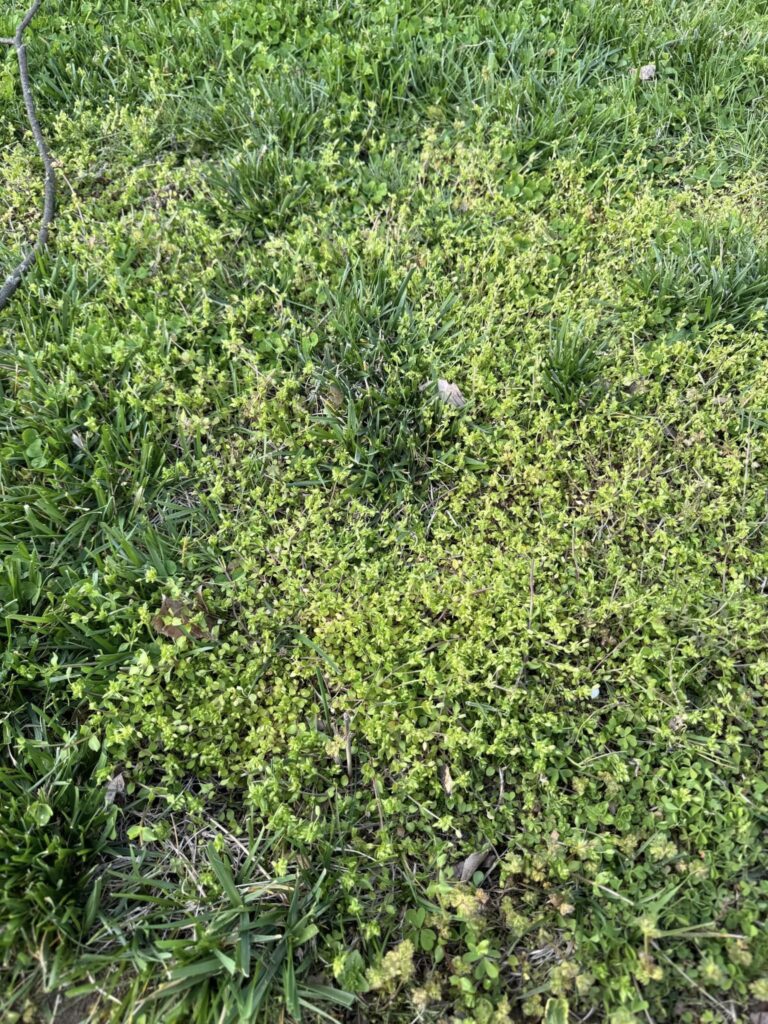
Maintaining a pristine lawn is akin to painting a masterpiece—it requires attention to detail, patience, and the right techniques. Spot treating lawn weeds is one such technique, a focused approach that targets the unwanted plants without affecting the beauty of the canvas that is your lawn. Here’s an in-depth look at identifying common lawn weeds and the best solutions for spot treatment.
Identifying Common Lawn Weeds
The first step in spot treatment is to identify the weeds plaguing your lawn. Here are some of the usual suspects:
- Dandelions (Taraxacum officinale): Easily recognized by their yellow flowers and fluffy seed heads.
- Crabgrass (Digitaria species): A grassy weed that thrives in hot, dry conditions.
- Clover (Trifolium species): A broadleaf weed with a distinctive three-leafed shape.
- Chickweed (Stellaria media): A low-growing weed with small, star-shaped flowers.
- Plantain (Plantago major): Broad leaves with pronounced veins, often found in compacted soils.
DIY Solutions for Spot Treating Weeds
For those who prefer a hands-on approach, there are several DIY solutions for spot treating weeds:
- Boiling Water: Pouring boiling water directly onto weeds can effectively kill them without the use of chemicals.
- Vinegar: A natural acid, vinegar can be used to burn the leaves of weeds, causing them to die.
- Salt: A salt solution can dehydrate weeds but should be used sparingly to avoid soil damage.
- Corn Gluten Meal: This natural pre-emergent can prevent weed seeds from germinating.
Commercial Products for Spot Treating Weeds
When DIY methods aren’t enough, there are numerous commercial products designed for spot treating weeds:
- Glyphosate: A non-selective herbicide that kills most plants it comes into contact with. It’s effective but should be used with caution.
- 2,4-D: A selective herbicide that targets broadleaf weeds without harming grass.
- Dicamba: Another selective herbicide that’s effective against a wide range of broadleaf weeds.
- Isoxaben: A pre-emergent herbicide that prevents weed seeds from developing.
First-Hand Experience with Spot Treating Weeds
In my years as a lawn care expert, I’ve seen the effectiveness of both DIY and commercial solutions. For instance, a client with a naturalistic approach preferred using vinegar to treat dandelions. The acidity of the vinegar burned the dandelion leaves, and after a few treatments, the problem was resolved.
Another client faced a severe crabgrass invasion. We opted for a selective herbicide containing quinclorac, which specifically targets crabgrass. The results were impressive, with the crabgrass dying off and the surrounding lawn remaining lush and green.
Tips for Successful Spot Treatment
- Timing: Apply treatments when weeds are young and actively growing for the best results.
- Accuracy: Use a narrow-spray nozzle or a paintbrush for precise application.
- Persistence: Some weeds may require multiple treatments, so be persistent and monitor your lawn regularly.
- Safety: Always wear protective gear and follow the manufacturer’s instructions when using commercial herbicides.
Advanced Spot Weed Control for Lawns
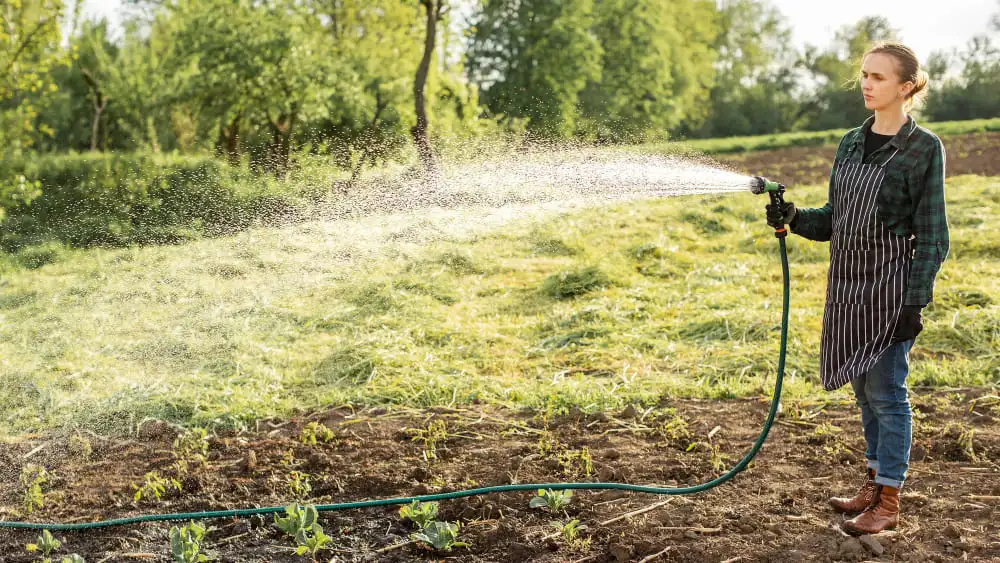
In the quest for a flawless lawn, advanced spot weed control is the final frontier. It’s not just about reacting to weeds as they appear; it’s about proactively integrating strategies into your lawn care routine to prevent them from taking root in the first place. Here’s how you can elevate your lawn care regimen with advanced spot weed control techniques.
Integrating Spot Weed Control into Your Lawn Care Routine
- Regular Monitoring: Vigilance is key. Inspect your lawn weekly for early signs of weed emergence.
- Timely Treatment: At the first sign of weeds, apply spot treatments promptly to prevent them from spreading.
- Soil Health: Maintain a healthy soil ecosystem to discourage weed growth. This includes proper fertilization, aeration, and pH balancing.
- Mowing Practices: Mow at the right height for your grass type to encourage dense growth and shade out weed seedlings.
- Watering Wisely: Overwatering can promote weed growth. Water deeply but infrequently to encourage strong root systems in your grass.
Long-Term Strategies for Minimizing Weed Recurrence
- Pre-Emergent Herbicides: Apply pre-emergent herbicides in early spring to prevent weed seeds from germinating.
- Mulching: Use organic mulches in garden beds to suppress weeds and improve soil health.
- Landscape Fabric: In non-grassy areas, consider landscape fabric to prevent weeds while allowing water and air to reach the soil.
- Reseeding: Overseed your lawn in the fall to ensure a thick turf that can outcompete weeds.
- Diversity: Incorporate a variety of grasses suited to your climate to reduce the risk of weed infestations.
First-Hand Experience with Advanced Spot Weed Control
Through my extensive experience in lawn care, I’ve learned that the best defense against weeds is a strong offense. For example, a client’s lawn was frequently invaded by crabgrass despite regular spot treatments. We implemented a pre-emergent strategy, and the following season, the crabgrass issue was significantly reduced.
Another client struggled with broadleaf weeds. By adjusting their mowing height and reseeding with a robust grass blend, we saw a marked decrease in weed problems. These experiences highlight the importance of a comprehensive approach to weed control.
Expert Tips for Spot Weed Control Success
- Stay Informed: Keep up with the latest in lawn care products and techniques to ensure you’re using the best methods available.
- Be Patient: Advanced weed control is a long-term commitment. Results may not be immediate, but consistency will pay off.
- Adapt: Be prepared to adjust your strategy based on weather conditions, new weed challenges, and the performance of your lawn.
Conclusion
Embracing Spot Weeding for a Lush Lawn
Throughout this comprehensive guide, we’ve explored the intricacies of spot weeding, a targeted approach to lawn care that promises both aesthetic beauty and ecological balance. We’ve delved into the methods and benefits of spot weeding, the selection of the right spot weed killer, and the techniques for spot spraying weeds effectively. We’ve also shared insights on how to spot treat lawn weeds with both DIY solutions and commercial products, and we’ve outlined advanced strategies for integrating spot weed control into your regular lawn care routine to minimize weed recurrence.
The journey to a healthier, more beautiful lawn is not without its challenges, but the rewards are clear. By adopting spot weeding, you’re choosing a method that is not only effective but also mindful of the environment. It’s a way to maintain your lawn’s health and your property’s curb appeal without resorting to excessive chemical use.
Share Your Green Success Stories
Now, we turn to you, our green-thumbed readers, to join the conversation. Have you tried spot weeding in your own lawn? What successes and challenges have you encountered? Share your stories in the comments below and become part of a community dedicated to sustainable lawn care practices.
For those seeking more personalized advice, our lawn care experts are here to help. Whether you’re battling a specific weed or looking for a complete lawn care overhaul, our consultation services are tailored to meet your needs. Reach out today, and let’s cultivate the lawn of your dreams together.
FAQs
Can spot weed killers be used in vegetable gardens or near edible plants?
Spot weed killers should be used with caution near edible plants. Many are not suitable for use in vegetable gardens due to the risk of contamination. Always check the label for specific usage instructions and consider physical removal methods or organic alternatives for weeds in these areas
How do I ensure that spot weed killer doesn’t harm my desirable plants?
To protect desirable plants, apply spot weed killer carefully and directly to the weeds. Use a shield, such as cardboard, to prevent drift, and choose a calm day for application. Consider gel formulations or spot treatment tools for precise application.
Are there eco-friendly or organic spot weed killers available?
Yes, there are several eco-friendly and organic options, such as those containing natural acids like vinegar or fatty acids. These products are often OMRI listed, indicating they are suitable for organic gardening.
What’s the difference between spot treatment and broad-scale weed treatment?
Spot treatment targets individual weeds or small clusters, while broad-scale treatment is applied over larger areas where weed infestation is extensive. Spot treatment is more precise and conserves herbicide use.
Can spot weed killers be used for pre-emergent weed control?
Spot weed killers are generally post-emergent, meaning they are applied to visible weeds. Pre-emergent herbicides are used to prevent weed seeds from germinating and are typically applied to larger areas before weeds appear

